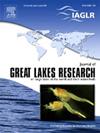An evaluation of sanitary and environmental survey use to protect beaches in the Great Lakes basin
IF 2.4
3区 环境科学与生态学
Q3 ENVIRONMENTAL SCIENCES
引用次数: 0
Abstract
Beaches are important for recreational and economic purposes. Beach advisories represent significant potential for human health risks as well as adverse impacts on local economies. The International Joint Commission’s Health Professionals Advisory Board (HPAB) and the Great Lakes Beach Association (GLBA) collaborated to assess the binational extent, experience, and effects of Great Lakes Beach Sanitary Surveys (BSS) in the United States and equivalent Environmental Health and Safety Surveys (EHSS) in Canada. A working group of HPAB and GLBA members distributed a questionnaire to beach managers around the Great Lakes. A total of 34 responses were received from beach programs and groups in each Great Lakes state in the United States and from Ontario, Canada. While 68% of respondents indicated surveys were conducted annually, at least 26% indicated they were not. Most beach monitoring programs around the Great Lakes used surveys to identify Canada geese (85% of programs), gulls (74%), stormwater runoff (74%), runoff from parking lots (59%) and algal blooms (58%) as sources of fecal pollution and potential health threats. Sewage (44%), dog fecal droppings (41%) and dangerous currents (32%) were also commonly reported. Waterfowl control actions after BSS/EHSS were the most common mitigation activity (65% of programs). Beach landscaping (50%) and sand grooming (47%) were also common mitigations. These results indicate the need to encourage use of BSS/EHSS more strongly, ensure beach programs have sustainable resources for BSS/EHSS, and ensure BSS/EHSS guide follow-up studies or mitigation actions.
对用于保护五大湖流域海滩的卫生和环境调查进行评估
海滩对于娱乐和经济目的非常重要。海滩警告可能会对人类健康造成重大风险,并对当地经济产生不利影响。国际联合委员会的卫生专业人员咨询委员会 (HPAB) 和五大湖海滩协会 (GLBA) 合作评估了美国五大湖海滩卫生调查 (BSS) 和加拿大同等环境卫生与安全调查 (EHSS) 的两国范围、经验和效果。一个由 HPAB 和 GLBA 成员组成的工作组向五大湖周边的海滩管理者分发了一份调查问卷。从美国五大湖各州和加拿大安大略省的海滩项目和团体共收到 34 份回复。虽然 68% 的受访者表示每年都进行调查,但至少有 26% 的受访者表示没有进行调查。五大湖区的大多数海滩监测计划都通过调查将加拿大鹅(85% 的计划)、海鸥(74%)、雨水径流(74%)、停车场径流(59%)和藻类水华(58%)确定为粪便污染和潜在健康威胁的来源。污水(44%)、狗粪便(41%)和危险水流(32%)也是常见的报告来源。BSS/EHSS 后的水禽控制行动是最常见的缓解活动(65% 的计划)。海滩美化(50%)和沙地整理(47%)也是常见的缓解措施。这些结果表明,需要更大力地鼓励使用 BSS/EHSS,确保海滩计划拥有可持续的 BSS/EHSS 资源,并确保 BSS/EHSS 能够指导后续研究或缓解行动。
本文章由计算机程序翻译,如有差异,请以英文原文为准。
求助全文
约1分钟内获得全文
求助全文
来源期刊

Journal of Great Lakes Research
生物-海洋与淡水生物学
CiteScore
5.10
自引率
13.60%
发文量
178
审稿时长
6 months
期刊介绍:
Published six times per year, the Journal of Great Lakes Research is multidisciplinary in its coverage, publishing manuscripts on a wide range of theoretical and applied topics in the natural science fields of biology, chemistry, physics, geology, as well as social sciences of the large lakes of the world and their watersheds. Large lakes generally are considered as those lakes which have a mean surface area of >500 km2 (see Herdendorf, C.E. 1982. Large lakes of the world. J. Great Lakes Res. 8:379-412, for examples), although smaller lakes may be considered, especially if they are very deep. We also welcome contributions on saline lakes and research on estuarine waters where the results have application to large lakes.
 求助内容:
求助内容: 应助结果提醒方式:
应助结果提醒方式:


